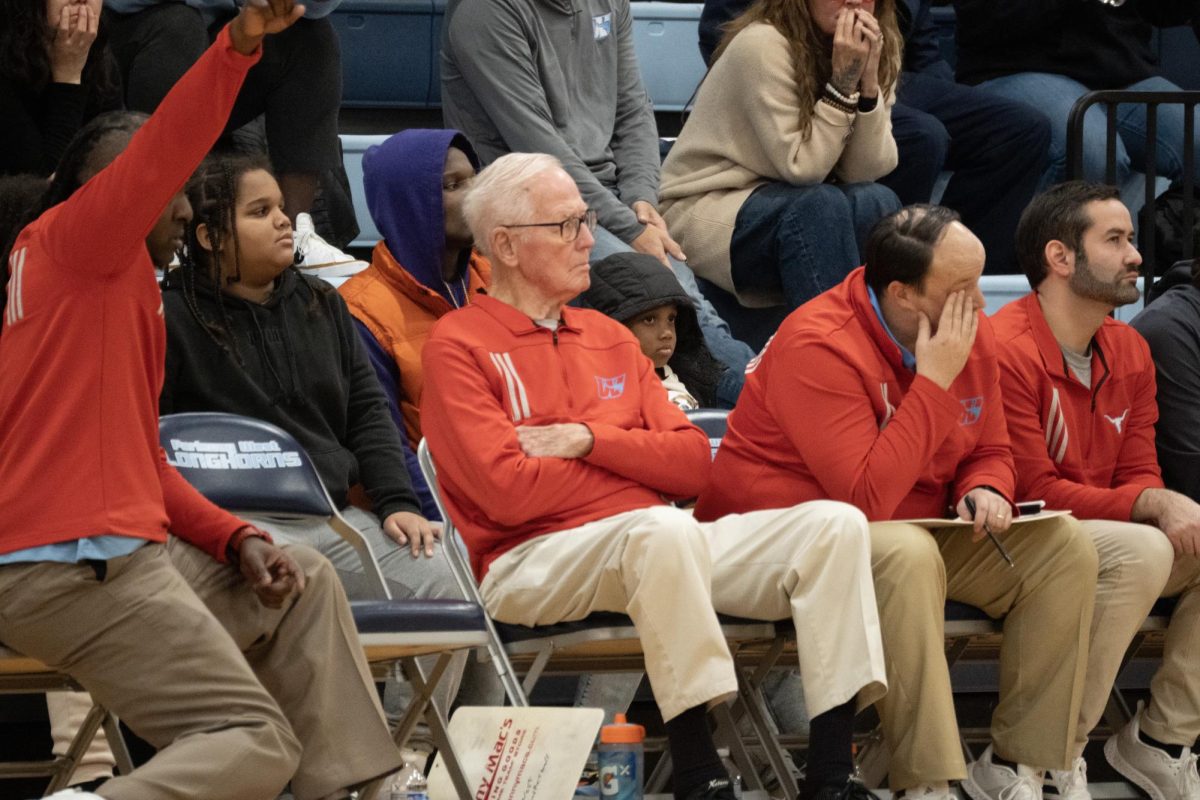The United States Open Tennis Tournament, commonly known as the U.S. Open, was transformational for women’s equality nationwide. Competitor Coco Gauff won the women’s singles division and earned a $3 million award for her achievement.
Only 19 years old at the time of her win, Gauff is the youngest American to win the tournament since 1999. Not only has Gauff been widely successful in tennis, but she has used her platform to speak about LGBTQ issues, the Black Lives Matter Movement and equal pay for women.
“I’m proud of Coco Gauff [for winning the tournament]. It’s a really big achievement and milestone set by her for women’s tennis,” freshman and JV tennis player Sara Ashok said.
The 2023 U.S. Open marks 50 years since the legendary female tennis player, Billie Jean King, swung her racket to beat men’s tennis player Bobby Riggs at the Houston Astrodome. This match, commonly known as the “Battle of the Sexes”, has received national attention for its trailblazing components. King stomped her feet to demand equal pay for women in tennis. Since 1973, the wage gap in tennis has equalized, but there is still more to be done.

“There is a certain imbalance of equality [in tennis] because guys, stereotypically, are more athletic. In the U.S. Open and other competitions, guys receive more attention in general,” Ashok said.
In addition to battling inequality as a woman, Gauff serves as an example for the younger generation because she is part of an underrepresented portion of the community. In recent years, there has been a surge in African-American participation in tennis by about 46 percent; however, minorities still only make up 38 percent of all U.S. tennis players. There is a long way to go for more inclusion of minorities in tennis and sports across the board.
Like her, Naomi Osaka, a 26-year-old Japanese-Haitian tennis star, has received hate in the media due to her background. In Japan, her birthplace, most are not accepting of her dual nationalities, condemning her for genetic composition. Still, Osaka advocated for racial justice with the Women’s Tennis Association and the Asian Americans and Pacific Islander community. Rather than shying away from the spotlight, Osaka embraced her race and advocated for people who have faced racial discrimination in the past.
Like Gauff, King and Osaka, many others have taken stands for justice. Twenty-three-time Grand Slam singles champion Serena Williams has spoken out against injustices in the sports world, advocating for maternal health for new athlete-mothers. From 2019 to 2023, maternal mortality rates among black women rose from 23.8 deaths per 100,000 live births to 32.9 in 2021. Because Williams was personally impacted by pregnancy complications with her daughter Alexis Olympia Ohanian Jr., she has a strong drive for maternal health activism.
Besides maternal health issues, Williams has faced other controversies in the past. In the media, she has been compared to a monkey, has received inappropriate comments about her physique, and has been told she is a man. As a strong, successful woman, Williams was not given the respect she deserved because she does not fit the common stereotype of an idealistic women’s tennis player. However, she continued to advocate for issues she was eager about. To reward her passionate activism, Williams received the Jackie Robinson Sports Award, which is given to athletes who are not only exemplary in their sport but also make an impact in their communities.
“People need to advocate for social justice in tennis because [women’s] tennis gets [over]looked compared to [men’s] tennis,” sophomore and JV tennis player Chloe Ottman said.
While tennis has a myriad of social issues in of itself, other sports such as soccer have recently become a topic of controversy, for there are large pay gaps between women and men, as well as racial issues. In the National Basketball Association (NBA), men are paid, on average, $5.3 million a year. However, women in the Women’s National Basketball Association (WNBA), are paid only $130,000 a year, on average. Professional basketball is only one example of a distinct pay difference between male and female athletes.
“On a global stage, [tennis] is just like any other sport. Male sports get a lot more attention than female sports. There’s a lot of growth that needs to happen and there’s still a long way that we need to go,” varsity girls and boys tennis coach Katelyn Arenos said.
Like King, Osaka, Williams and Guaff, young athletes should advocate for equality and justice in sports. It is vital to establish fair play for people of all genders, races, and backgrounds in the sports world because there are currently many injustices within the system.
“We should try to achieve equality for everyone in tennis and in other sports,” sophomore and JV tennis player Kate McCammon said. “It is important that we make sure that everyone has equal opportunities in any sport.”

![Female tennis players thrive regardless of their limitations. While there are many issues within the sport — unequal pay, no maternal care for athlete-mothers, unequal opportunities for different races and more — many activists have been advocating for change within the industry. “I hope there are a lot more milestones set along the way and a lot more improvements in [tennis],” freshman and JV tennis player Sara Ashok said.](https://pwestpathfinder.com/wp-content/uploads/2023/10/Screenshot-2023-10-24-at-12.37.04-PM.png)

![The varsity boys cross country team poses for a photo at the Mike Rose Soccer Complex in Memphis, Tenn. The Memphis Twilight Classic is the largest event the team attends. “[I enjoyed] hanging out with the team every day at practice,” Patten said. “I wanted to be the best I could for my team; I really wanted to help out.”](https://pwestpathfinder.com/wp-content/uploads/2025/09/XC-PHOTO-1200x822.jpg)

![Celebrating their landmark victory, the Parkway West Boys Hockey team gathers together on the ice. Over the course of the season, the team grew closer together while pursuing their final goal: winning the coveted Wickenheiser Cup. “[Winning the cup] was awesome. [As] a senior, it was super rewarding to end on a high note. It had to be the most memorable part of my career,” varsity hockey player and senior Hunter Beach said.](https://pwestpathfinder.com/wp-content/uploads/2025/03/DSC3974-Enhanced-NR-1200x799.jpg)

![Holding the disc, senior Nathan Thompson waits for an opportunity to pass to senior Timmy Fry. Parkway United’s ultimate frisbee team is made up of students from each of the four Parkway schools. “The one thing I really like about ultimate [frisbee] is the community because it’s so different from any other sport I've been a part of. [My] national teammates are people who we play against in the regular season, so we see each other all the time. It's always fun hanging out with [them],” Thompson said.](https://pwestpathfinder.com/wp-content/uploads/2024/12/C96A6823-1200x800.jpg)
![Senior Josie Grunzinger watches the football game intently from the sidelines on Oct. 18. Grunzinger stood out to the crowd as the only girl on the football team, encouraging other girls who want to play football to take a chance and go for a sport outside of their comfort zone. “If you think you could [play football] and you want to do it, just try it, because all it takes is to actually try it out,” Grunzinger said.](https://pwestpathfinder.com/wp-content/uploads/2024/10/Untitled-design-1200x675.png)


![With her arms held high, junior Jenna Rickelman throws the ball across the pool during a girls water polo practice. With hours of practice after school and over the summer, Rickelman saw many improvements in her water polo skills. “When I look at [my] stats, I'm so much better than I was last year,” Rickelman said.](https://pwestpathfinder.com/wp-content/uploads/2024/05/Untitled-design-2-.png)
![Putting on his helmet, catcher and senior Tommy Eschbach prepares to get in his primary stance. Despite losing 6-1 against Eureka on April 16, Eschbach didn’t let the tough loss affect his playing or mental health. “It's [so] easy to get caught up in the sport and what you're doing that [after] one bad game or a stretch of games it is hard to remind yourself that your worth as a person isn't directly related to your performance on the field,” Eschbach said.](https://pwestpathfinder.com/wp-content/uploads/2024/05/DSC_0415-1-1-1200x800.jpg)


Will Gonsior • Oct 30, 2023 at 10:36 am
Thank you for the hard work Ruthvi this is awesome! Coco and Osaka are such superstars. I feel like the wage gap problem in the WNBA boils down more to income as a percentage of league revenue vs actual salary (the WNBA does not turn a profit, though the players are still probably relatively underpaid.) In areas where womens’ basketball stars are, relative to their male peers, a better draw, you do see more equal pay. In the college game stars like Paige Bueckers, Caitlin Clark, Angel Reese, and Jacy Sheldon generally pull in more name recognition (and, by the economics of college sports, more money) than their one-and-done male counterparts. (An Eleven Warriors poll found that Ohio State fans are more excited for the return of Sheldon than any male Buckeye basketballers; rising sophomore Cotie McMahon finished third in the poll.) I’d much rather watch Clark shoot from the logo or Sheldon run her famed Energizer Bunny press than the more efficient, formulaic professional games.